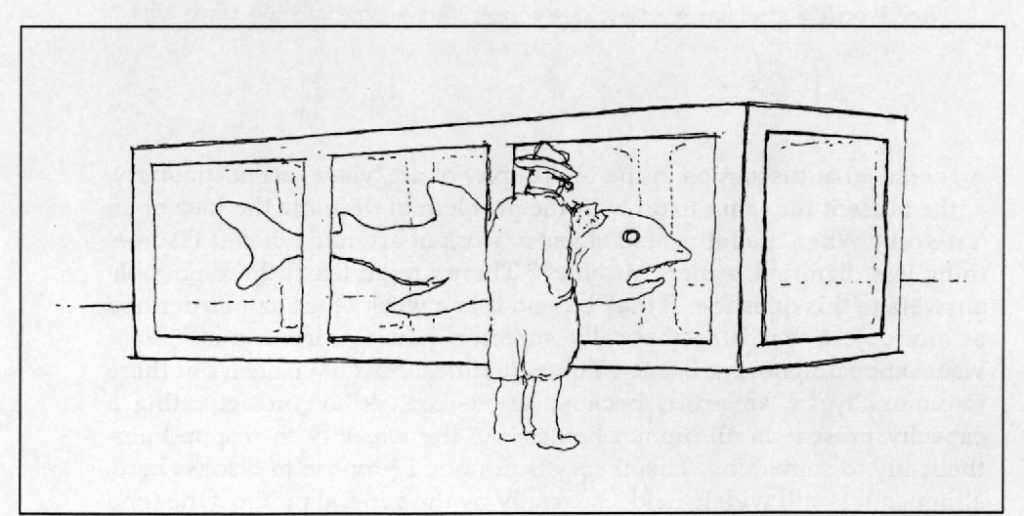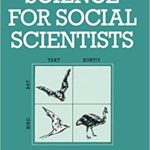
Artworks are traps (Gell 2006)
GELL, Alfred. 2006. Vogel’s net: traps as artworks and artworks as traps. In: Howard Morphy; Morgan Perkins (eds.). The Anthropology of Art: A Reader. Oxford: Blackwell, pp.219-35.
DANTO E A ANTROPOLOGIA DA ARTE:
Remember that Danto says that looking at a work of art is like encountering a person; one encounters a person as a thinking, co-present being by responding to his or her outward form ad behaviour – similarly one responds to an artwork as a co-present being, an embodied thought. (Gell 2006:226)
INDEX
Do animal traps, in their bare, decontextualized presence, tell us no more than that human beings like to consume animal flesh? (Gell 2006:226)
Not designed to communicate or to function as a sign (in fact, designed to be hidden and escape notice), the trap nonetheless signifies far more intensely than most signs intended as such. The static violence of the tensed bow, the congealed malevolence of the arrangement of sticks and cords, are revelatory in themselves, without recourse to conventionalization. Since this is a sign that is not, officially, a sign at all, it escapes all censorship. We read in it the mind of its author and the fate of its victim. (Gell 2006:226)
ARMADILHAS SÃO HÍBRIDOS CAÇADOR-CAÇA (materialização da intenção do caçador e da disposição da presa num meio)
The arrow trap is particularly clearly a model of its creator, because it has to substitute for him. a surrogate hunter, it does its owner’s hunting for him. It is, in fact, an automaton or robot, whose design epitomizes the design of its maker. It is equipped with a rudimentary sensory transducer (the cord, sensitive to the animal’s touch). This afferent nervous system brings information to the automaton’s central processor (the trigger mechanism, a switch, the basis of all information-processing devices) which activates the efferent system, releasing the energy stored in the bow, which propels the arrows, which produce action-at-a-distance (the victim’s death). This is not just a model of a person, like any doll, but a ‘working’ model of a person. What carving, it is surely reasonable to ask, which only shows us our outward lineaments, actually reveals as much about human being as this mechanical device? Much more of what there actually is to a human being is present here than in any carving (Gell 2006:227)
Moreover, if we look at other traps, we are able to see that each is not only a model of its creator, a subsidiary self in the form of an automaton, but each is also a model of its victim. This model may actually reflect the outward form of the victim, as in the comical giraffe trap shown in figure 13.5, which delineates, in negative contour, the outlines of the lower half of a giraffe. Or the trap may, more subtly and abstractly, represent parameters of the animal’s natural behaviour, which are subverted in order to entrap it. Traps are lethal parodies of the animal’s Umwelt (figures 13.6, 13.7) Thus the rat that likes to poke around in narrow spaces has just such an attractive cavity prepared for its last, fateful foray into the dark (figure 13.6). Of course, it is not really the case that the trap is clever or deceitful; it is the hunter who knows the victim’s habitual responses and is able to subvert them. But once the trap is in being, the hunter’s skill and knowledge are truly located in the trap, in objectified form, otherwise the trap would not work. This objective knowledge would survive even the death of the hunter himself. It would also be (partially) ‘readable’ to others who had only the trap, and not the animal lore that was reflected in its design. From the form of the trap, the dispositions of the intended victim could be deduced. In this sense, traps can be regarded as texts on animal behaviour. (Gell 2006:227-8)
The trap is therefore both a model of its creator, the hunter, and a model of its victim, the prey animal. But more than this, the trap embodies a scenario, which is the dramatic nexus that binds these two protagonists together, and which aligns them in time and space. […] This time-structure opposes suspended time, the empty time of ‘waiting’, to the sudden catastrophe that ensues as the trap closes. (Gell 2006:228)
TRAPPING =/= CHASING:
The fact that animals who fall victim to traps have always brought about their downfall by their own actions, their own complacent self-confidence, ensures that trapping is a far more poetic and tragic form of hunting than the simple chase. […] The trapper is God, or the fates, the trapped animal is man in his tragic incarnation. (Gell 2006:228)
NEXUS OF INTENTIONALITIES
These devices embody ideas, convey meanings, because a trap, by its very nature, is a transformed representation of its maker, the hunter, and the prey animal, its victim, and of their mutual relationship, which, among hunting people, is a complex, quintessentially social one. That is to say, these traps communicate the idea of a nexus of intentionalities between hunters and prey animals, via material forms and mechanisms. (Gell 2006:228)





 O LaSPA é sediado no Instituto de Filosofia e Ciências Humanas (
O LaSPA é sediado no Instituto de Filosofia e Ciências Humanas (